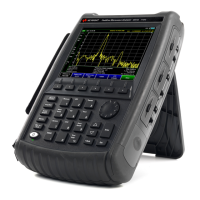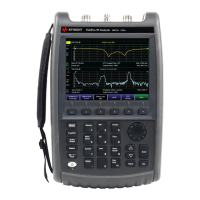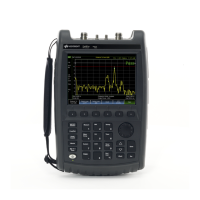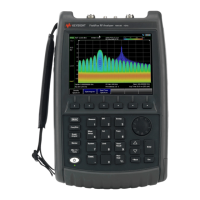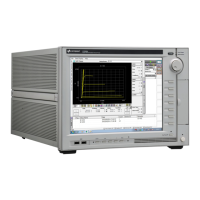60 Keysight N9927-90001 User’s Guide
DTF (Distance to Fault) Measurements
How to make DTF Measurements
Optional settings
How to make DTF Measurements
Before starting, you may need the following:
— Jumper cable or adapter to connect the beginning of the DUT to the
FieldFox.
— LOAD with correct connector type and gender to terminate the end of the
DUT (if possible).
— The known length and cable type of the DUT. If the cable type is not known,
then the Cable Loss (dB/Meter) and Velocity Factor of the DUT are required.
1. Connect any necessary jumper cable or adapter to the FieldFox RF OUT
port. Do NOT connect the DUT.
2. Press Preset
then Preset to return the FieldFox to the default settings.
3. Then Mode
then CAT.
4. Then Meas 1
then DTF.
5. Press Freq/Dist
, then Stop Distance and enter the length of the DUT. You
can optionally set the Start Distance
6. Press Cal 5
and follow the Cal prompts. Learn all about Calibration in
“How to Perform a Calibration” on page 123.
7. Disconnect any components or antenna that should NOT be measured and
connect a LOAD at the end of the DUT.
8. Press Meas Setup 4
then DTF Cable Specifications.
“Coupled Frequency” on page 64
“Cable (Correction) Specifications” on page 65
“Window Settings” on page 68
“DTF Units” on page 69
“Calculated DTF values” on page 69
“About Alias Faults” on page 69
“All about Markers” on page 598
“All about Limit Lines” on page 613
“Saving and Recalling Files” on page 672
Trace Math is NOT available in DTF Measurements.

